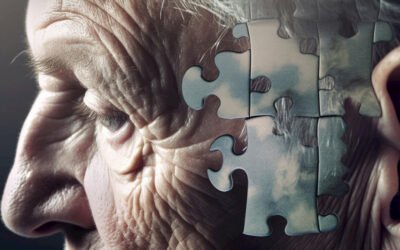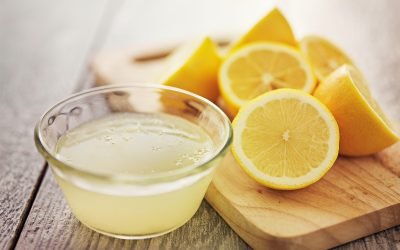The Human Being Is A Rhythmic Organism
In-built in the human organism’s design is a rhythmic system: an internal organization which coordinates all the rhythmic functions of the body and mind.
The primary organs of the rhythmic system are the heart, and secondarily, the lungs. Heart and lung activities are characterized by ceaseless rhythm. Also, whenever a strong feeling is experienced, changes occur in the subtle interplay of blood and breath. The heart and respiratory rates may increase or become erratic. When people recount strong emotional episodes, we often hear expressions such as “My heart skipped a beat,” or “It took my breath away.” Virtually every function of the body exhibits rhythmicity. The maintenance of specific rhythmicity is dependent upon an undisturbed general life-rhythm. In essence, health can be defined as a state wherein one’s life-rhythm is synchronized with the workings of the natural world. On the other hand, disease can be viewed as a disturbance of the synchronization between one’s life-rhythm and the eternal cycles and imperatives of Nature.
Traditional naturopathy is a health/healing discipline that was established in the 19th century. It views disease as the body’s attempt at self-cleansing and regeneration in order to self-heal. The human organism is designed to strive toward health, not disease. Disease is often a defensive reaction brought about by poor lifestyle habits. Therefore, the power to cure disease resides only within the patient’s body, but that innate power cannot fully prevail until wrong living habits stop and the fundamental elements of life and health, in necessary measure, have been set in place, namely: proper diet; pure water; fresh air; sunlight; adequate exercise, warmth, rest and sleep; emotional harmony; proper posture.
As human beings, we have an inherent relationship with these fundamental elements – disease is an outgrowth of a deficiency or excess of one or more of them. Restoration of health in the ill person is accomplished through the same means of sustaining life and preserving health in the well person.
If a substance is not fundamental to thehealth of the body, it’s also not fundamental to disease treatment. From this view comes the most important therapeutic principle of traditional naturopathy: Disease treatment must be based upon the use of the fundamental elements of life in accordance with the needs and abilities of the patient. Accordingly, Paracelsus, the renowned 15th- to 16th-century alchemist and professor of physics, medicine and surgery observed: “The physician should pass Nature’s examination.”
In 1904, noted traditional naturopath Adolph Just wrote in Return To Nature: “Those who no longer listen to the voice of Nature become the victims of a thousand different diseases and miseries…Humankind can recover and again become happy only via a true return to Nature… [by choosing] the food that Nature has laid before them from the beginning and bringing themselves again into relation with water, light and air, earth, etc. which Nature originally designed for them.”
Adolph Just is not suggesting that human beings forsake the comforts of modern existence, only that they reestablish their primal relationship with the life-sustaining elements of the natural world. For instance, instead of viewing diet as a form of entertainment, it should be seen primarily as a means for optimal survival. In this regard, Plato aptly stated: “Through your stomach come all your ills.”
In the 19th and early-20th centuries, naturopathic doctors developed many creative, highly effective therapies using Nature’s life- and health-giving elements. Originally, many of these therapies were applied within the setting of the numerous naturopathic health spas of those days which featured sunbathing, hiking in the fresh air, hydrotherapies, deep breathing, pure water,nourishing food, massage and lots of rest and sleep. However, with the introduction of “miracle drugs” came the misconception that simple naturopathic therapies were somehow quaint and outdated. And the hectic lifestyle of our era popularized a demand for the “quick-fix.”
The use of surgery and drugs (even natural medicines such as herbs and homeopathy) can only act upon the superficial symptoms of the underlying disharmony in an individual if the fundamental elements of life are not restored. And such disharmony may eventually manifest in some other, and perhaps more threatening, form.
Acute diseases such as influenza and colds, especially in children, may recede despite improper management if the patient’s powers of recuperation are still intact. However, chronic diseases such as arthritis and cancer can never be fully remedied by therapeutic fragments but only through restoration of the proper relationship of all the elements of life in organic unity. In 1892, in his book How Nature Cures, Emmet Densmore, M.D. writes: “…disease is but the expression and result of a disturbance of the conditions natural to life. The only useful office of the physician is to restore those conditions.”
Why Do We Get Sick?
Sickness is a state the body adopts because the state of normality can no longer be sustained. It is a valiant attempt by the innate healing power of the body to restore normality; the symptoms produced are evidence of this healing power’s efforts toward restoration. However, when treatment of the sickness does not feature reintegration with the fundamental elements of life, only reduction of symptoms is attainable, rather than full recovery of vigor and vitality-much like dispersing smoke while allowing a fire to continue burning out of control.
In the 1930s, famed Swedish health teacher Are Waerland began his Sun Viking movement. Many of his students experienced greatly improved health and even recovery from serious illnesses. Waerland taught that disease was a disturbance of a person’s life-rhythm, established through millions of years of biological evolution. He told his students to look outside the body to environmental conditions as primary factors that create health or disease. Waerland felt that health could only be produced, and disease eliminated, by restoring the original human life-rhythm which depends upon an unhindered relationship between the human body and the external factors of Nature.
Disease: A Defensive Reaction Of The Body
As a result of poor diet, lack of exercise and other lifestyle errors, the cells of a person’s joints begin to starve for nutrients and oxygen and cannot throw-off wastes. Those cells will now begin to deteriorate. In reaction, the body produces inflammation, a normal part of the immune response, to fight infection and increase circulation. And perhaps the body will deposit calcium in the joints to help stabilize them. Is this a destructive process? Certainly, but it’s also a logical defensive action by the body. Because the normal joint-state is no longer possible, the body does its best to protect itself under the circumstances. Therefore, the most fundamental response to arthritis is not painkillers and inflammatory drugs, but, rather, the introduction of proper nutrition, exercise and the other basic elements of life and health. They are the only things that can once again make normal joint function feasible.
The Two Primary Roots Of Disease
Deficiency or imbalance of Nature’s elements gives rise to the two primary roots of disease: autotoxemia–a level of bodily toxicity sufficient to impair vital functions and propel the body toward disease; enervation–when vital energy is expended in excess of the body’s normal production and falls below requirements for efficient operation.
Autotoxemia stems from poor diet, impure air and water, synthetic cosmetics, prescription drugs, cigarettes and other sources which can result in symptoms such as constipation, weak kidneys, unhealthy skin and shallow breathing. Enervation is primarily due to lack of rest and sleep, continual emotional stress and the habitual use of stimulants such as caffeine and alcohol. These two root factors work in conjunction, creating a vicious cycle. Autotoxemia causes congestion and overload, making the body work harder, and so, increases enervation by using up the powers of life to excess. Enervation, on the other hand, increases autotoxemia by slowing down all vital functions, thus leading to a back-up in normal fluid circulation, and, in turn, waste-removal.
Clearly, good health and the cure of disease depend upon effective bodily cleansing as well as the rebuilding of vital reserves which invariably requires a complete relationship with the fundamental elements of life.
Ancient physicians understood that human beings were inseparable from the natural universe. Disease was considered a result of people being alienated from Nature. They used fundamental elements such as fresh air, pure water, sunlight, natural diet and exercise not only to quell symptoms in the short-term, but to reintegrate the patient with Nature in order to sustain health in the long-term.
Hippocrates maintained that disease must be treated in accordance with natural laws. Also, when the great 17th-century physician Thomas Syndenham (renowned as the “English Hippocrates”) lay dying, he told his weeping pupils that he was content to die as he was leaving behind three physicians greater than he ever was. One of the pupils eagerly inquired, “Three great masters? Who are they?” Syndenham replied: “Water, air and exercise.”
A Health Lesson From The Rosebush
Let us say that during a summer’s walk while taking the fresh country air, you come upon an abandoned farm’s overgrown garden. You spot a rosebush choked by tall weeds and note its thin stems, pallid leaves and frail-looking flowers. Your first thought would not be: This plant looks like it can use some antibiotics and steroids. Rather, you would instinctively know that the first action necessary is to clear the tall weeds so that the rosebush receives adequate fresh air, sunshine and room to grow and expand. You would also conclude that it needs to be properly watered and nourished, and perhaps its trellis should be repaired to lend it a healthy posture. In other words, the most important step to take in bringing this plant back to health is the restoration of the required fundamental elements of life.
The above compelling logic supports the practice of artfully employing the fundamental elements of life as the primary tools for restoring and maintaining health. My own long-time clinical experience has proven to me that while treatment methods such as homeopathy, acupuncture, aromatherapy and herbal medicine are highly valuable, they are of secondary importance, because their full effectiveness is dependent upon the extent to which the fundamental elements of life are provided or denied.






